If the SARS-CoV2 virus spreads deeper into the country, India’s poorest states face a potential triple burden of disease in the face of Covid-19, data from states on disease and death shows. States like Bihar not only have the poorest health infrastructure and a high level of communicable and respiratory diseases, but their populations also report growing levels of known comorbidities for Covid-19, including hypertension and diabetes.
As states or countries grow rich, their burden of disease tends to shift from communicable to non-communicable, a process described as the epidemiological transition.
India’s richest states, including Kerala, Delhi and Goa are far along in this epidemiological transition, and hence, face a higher risk of non-communicable diseases like diabetes, hypertension and kidney conditions, which have emerged as comorbidities or aggravating factors in the treatment of Covid-19. India’s poorest states, on the other hand, have a far higher burden of communicable diseases, especially, most worryingly in the context of Covid-19 respiratory infections.
Also read: If you have flu symptoms, tell us — new health ministry advice to detect more Covid-19 cases
Covid comorbidities
“Heart disease, hypertension, prior stroke, diabetes, chronic lung disease, and chronic kidney disease have all been associated with increased illness severity and adverse outcomes,” the United States Centre for Disease Control has found with regard to its Covid-19 cases.
While India’s National Family Health Survey tests for blood pressure and blood sugar levels, a more complete picture of the prevalence of disease comes from the State-Level Disease Burden (SDB) Initiative published by the Indian Council of Medical Research, the Public Health Foundation of India, and the Institute for Health Metrics and Evaluation. The report uses a measure known as Disabilty-Adjusted Life Years (DALYs) to estimate the impact of a disease on a person’s life in terms of the years of healthy life lost to the disease. Death rates, meanwhile, are the number of deaths per 100,000 population as a result of a particular disease.
India’s richest states have the highest numbers of DALYs lost to some of the non-communicable diseases found to be comorbidities in the novel coronavirus epidemic, as well as the highest death rates from them.


However, what is also worrying is that India’s poorest states in the past few years have witnessed faster growth in these non-communicable diseases than the richest states, putting them at a growing risk of suffering complications in the treatment of Covid-19.
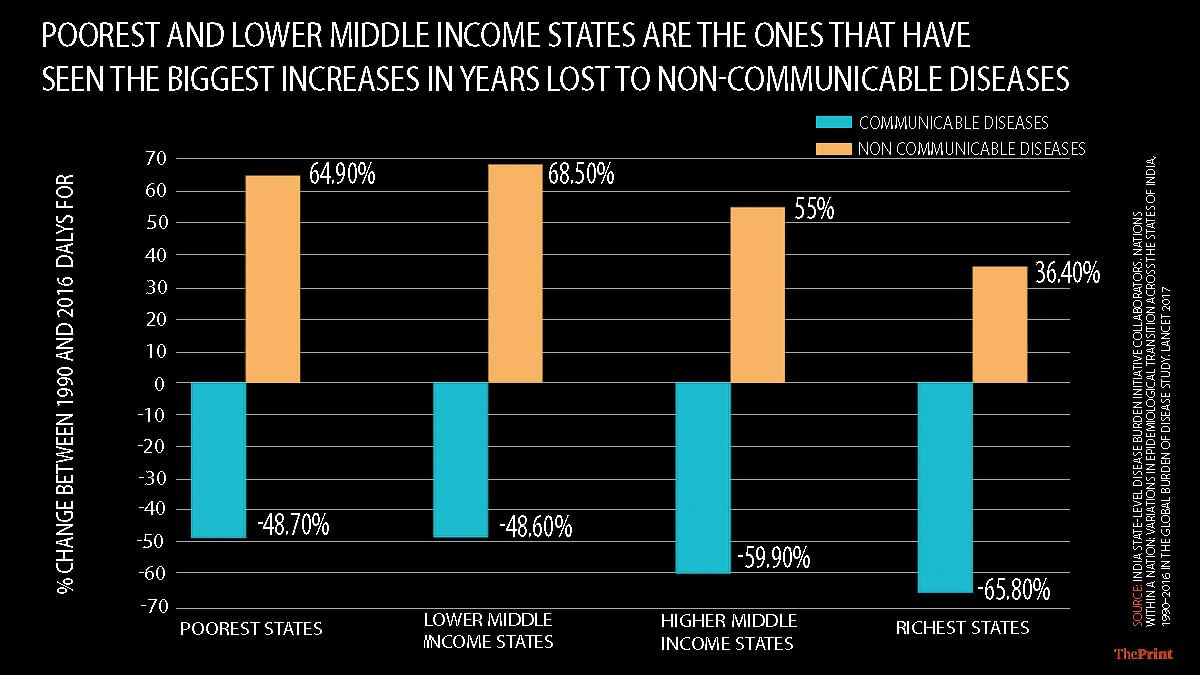
This comes on top of an already high rate of communicable diseases in the poorest states, especially respiratory diseases that are worrisome in the context of Covid-19. States like Bihar face a “double burden of disease” the SDB found. Bihar had the lowest ratio of DALYs lost to non-communicable diseases as compared to years lost to communicable diseases. In other words, the state has the lowest epidemiological transition ratio in the country.
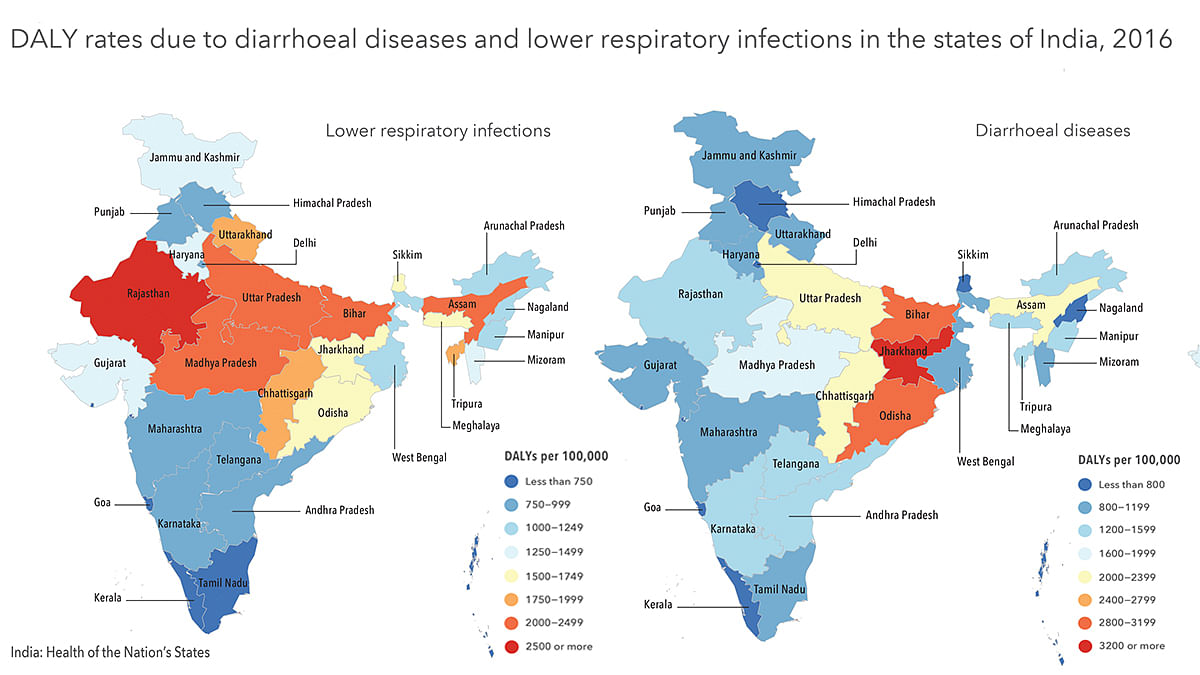
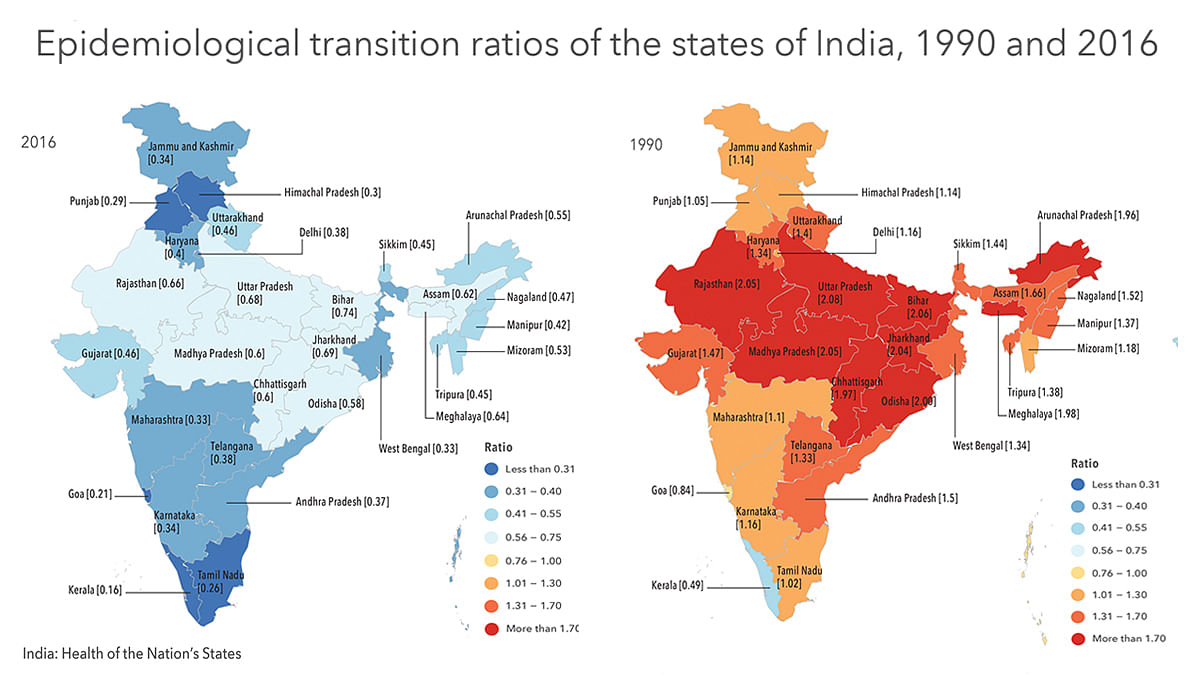
Also read: Rajasthan has done 30,000 tests, a reason why it could see more cases: Top health official
Poor health infra
Simultaneously, the health infrastructure in the poorest states is in the most precarious shape. Bihar has just one hospital bed and 4 doctors for every 10,000 people. This could add a third dimension to the burden of disease for the poorest states.
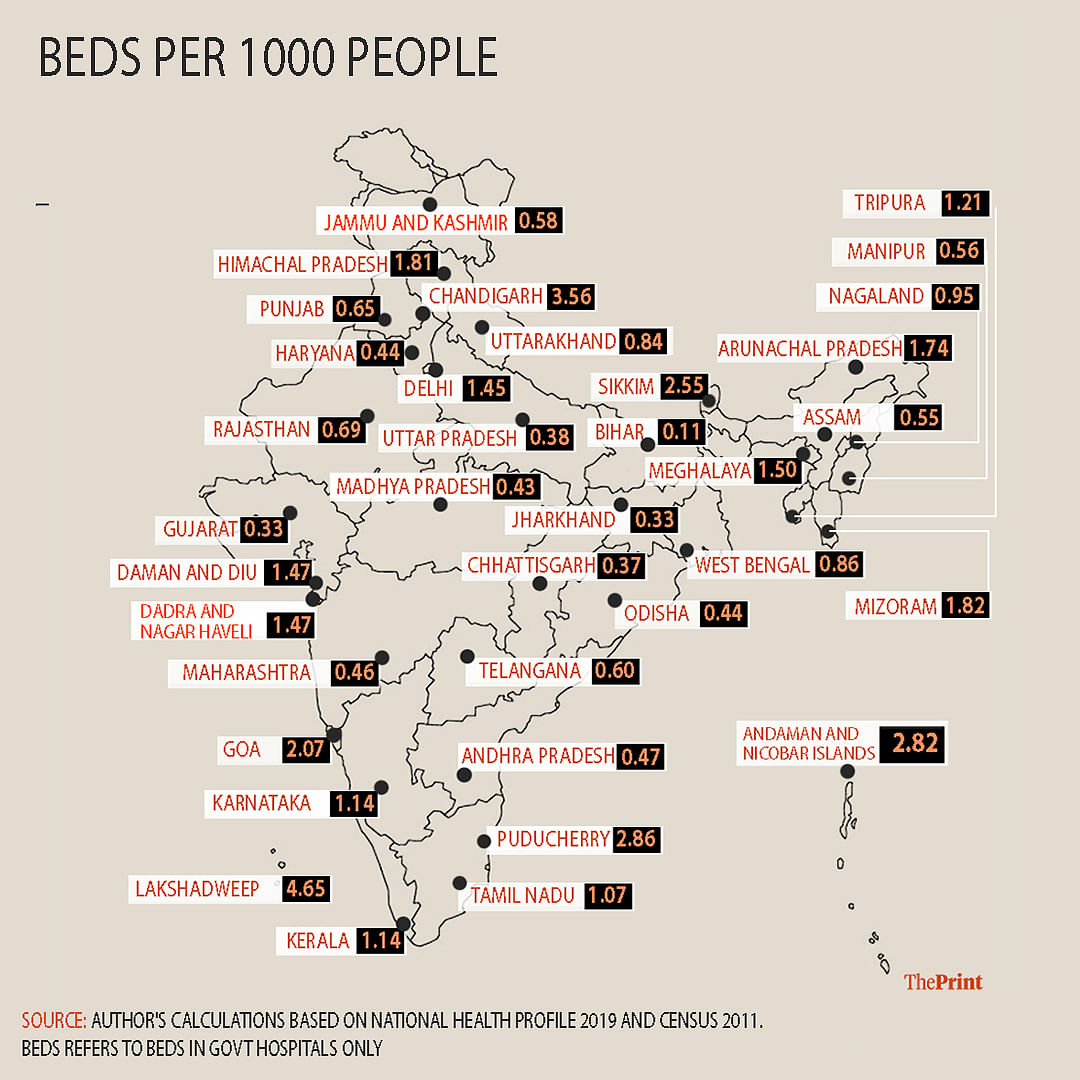
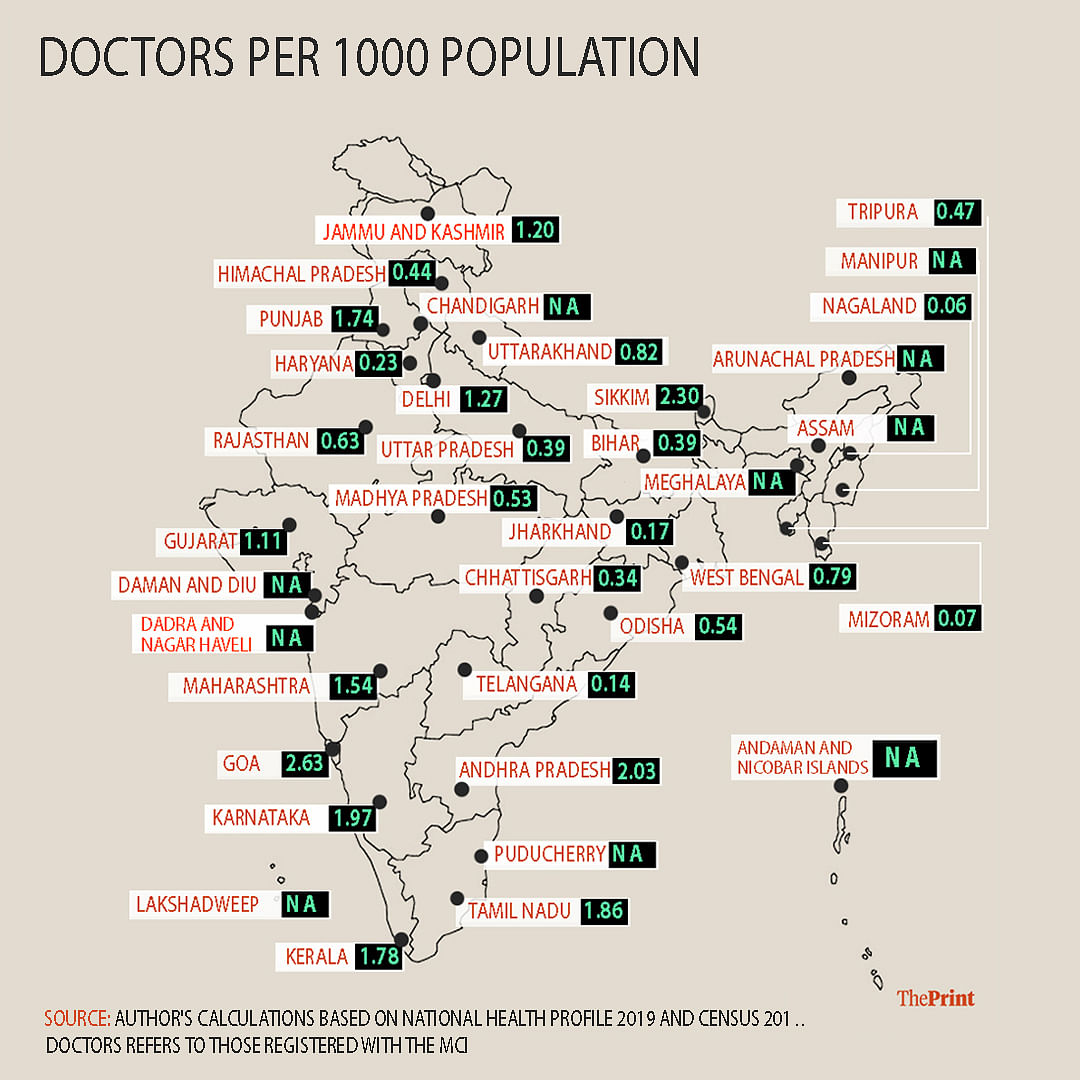
These inequalities are surfacing in other parts of the world too where more demographic clinical data is available. In the US, African-Americans form a disproportionate share of Covid-19 cases because of a combination of high rates of comorbidities, higher reliance on work that cannot be done from home and poor access to information and healthcare. India’s poorest states will have to be on high alert for this lethal combination.
The author is a Chennai-based data journalist. Views are personal.



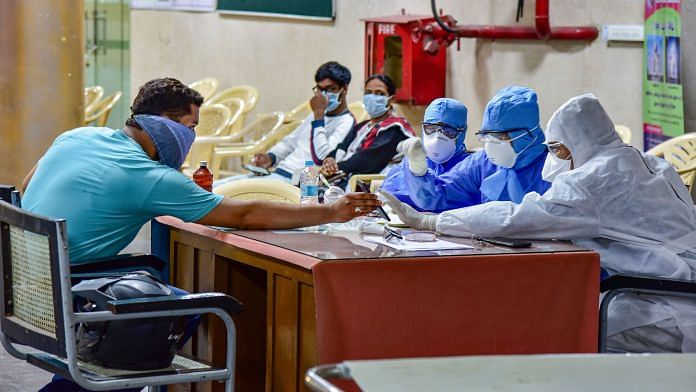



The way you presented your article with studies & researches , are undoubtedly very useful to for the way to adopt or to reach conclusions what are the problems to handle the pandemic with the existing conditions. But the picture is rather difficult & grim. So the way Government has hardly working with lockdown success at war footing & also they may be preparing for the conditions after lockdown. Our conditions to way to digest the worst health conditions all the way always , that would also help, the HQ, paracetamol & BCG let’s help hope help us.